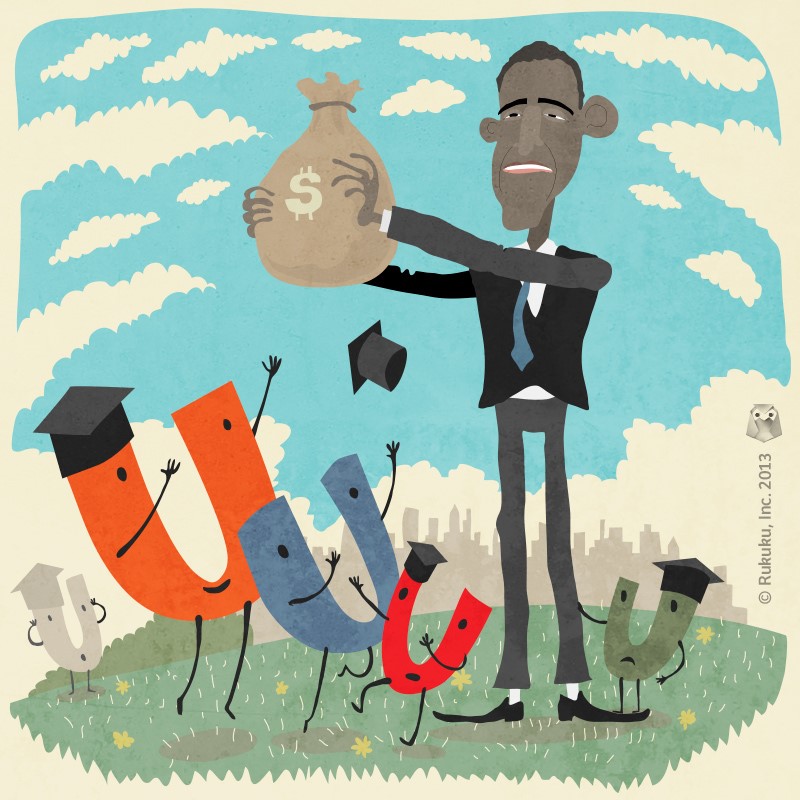In our most recent posts, we’ve discussed the student debt and cost control measures in Obama’s recent higher education reform proposal. The most exciting part of the reform, at least for non-traditional educational suppliers such as Rukuku, is its emphasis on technology and innovation. Some of that emphasis shows up in funding initiatives, and the rest of it shows up in general statements of support.
A few of the highlights:
- The Department of Education will promote programs that award learning based on competency rather than class time. That means that independent learners, such as those on Rukuku, can earn credit for what they learn even if they learned it outside the traditional classroom setting.
- The administration has introduced a $260 million dollar fund, called First in the World, for testing and evaluating new approaches to higher education. A cooperation with Rukuku could be an excellent example for this one, hint, hint.
- The Department of Labor is also offering $500 million for community colleges and some four-year colleges. A portion of that money will be dedicated to programs that accelerate progress along the educational track and reduce costs for students.
- The White House will try to reduce some regulatory barriers, which seems to mean they will let more people qualify for financial aid for doing less traditional stuff. My guess is that they will keep a pretty tight rein on this starting out, offering some financial assistance with competency test fees and that sort of thing, but hopefully we can eventually look at financial aid for classes on media such as Rukuku.
- The announcement included several other statements of support for tech stuff, many of them related to course design and student skill evaluation. These are all pretty general, but they do highlight some of the successes of recent programs involving technology and seem to say, “hey, we’re down with technology and will be open-minded about this.” Once again, good news for Rukuku.
In our next post, the final one related to this higher education reform, we’ll look at the chances that any of this reform will survive in Congress and the consequences if it doesn’t. Also, the White House has a full rundown of the plan here.







